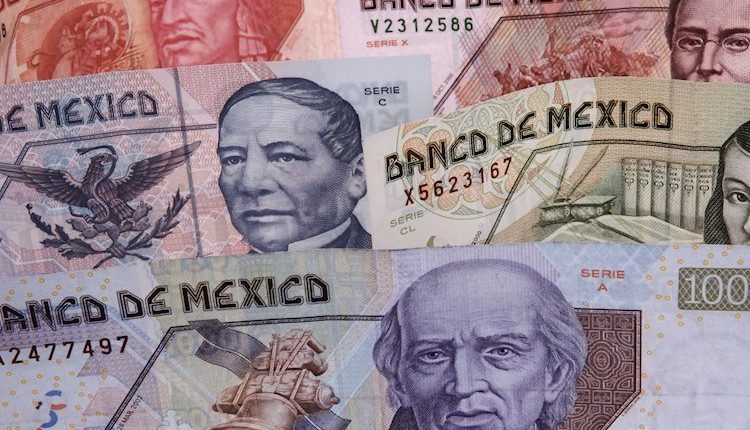- Mexican Peso floats around 18.00 amid an upbeat market mood after mixed US economic data.
- The International Monetary Fund reviewed Mexico’s forecasts to the upside but failed to underpin the emerging market currency.
- USD/MXN bias turned bullish after breaking above the 200-day Simple Moving Average.
Mexican Peso (MXN) extended losses in the early New York session after diving more than 2% against the US Dollar (USD) on Tuesday, which dragged the USD/MXN pair to a new six-month high at around 18.21. A weaker-than-expected employment report in the United States (US) and improvement in market sentiment sponsored a drop in the USD/MXN, which is hovering a few pips below weekly highs at the time of writing.
On Tuesday, the International Monetary Fund (IMF) raised Mexico’s economic forecasts due to robust consumption, services, and automotive production. Despite all those reviews, a jump in US bond yields sent the Mexican Peso tanking as the USD/MXN pair rallied past the 18.00 mark.
Aside from this, US economic data was mixed. The ISM Services PMI slowed down but remained in expansionary territory. Meanwhile, private hiring in the US decelerated, as revealed by the Employment Change report by Automatic Data Processing (ADP), which, although contradicted Tuesday’s JOLTs reports, could reinforce the case for the US Federal Reserve (Fed) not to hike rates at the upcoming monetary policy meeting. In that context, the US Dollar weakened, a headwind for the USD/MXN.
Daily Digest Market Movers: Mexican Peso plummets sharply in the week as the USD/MXN breaches 18.00
- Risk-on impulse stopped the Mexican Peso depreciation, though its bias has shifted bearish.
- The IMF increased growth projection in 2023 from 2.6% to 3.2% and from 1.5% foreseen in July to 2.1% for 2024.
- US ADP Employment figures came at 89,000, below forecasts of 153,000.
- US ISM Services PMI came at 53.6, as foreseen by analysts, though moderately slowed down.
- Mexico’s August remittances were $5,563 million in US Dollars, an advance of 8.6% YoY.
- Banxico’s September poll amongst economists reported that interest rates are expected to remain at 11.25%, while inflation would dip to 4.66%.
- The same poll shows the exchange rate is set to finish at around 17.64, down from 17.75.
- Mexico’s S&P Global Manufacturing PMI for September came at 49.8, sliding to contractionary territory and below August’s 51.2, as the economy loses steam.
- Business confidence in Mexico improved from 53.7 to 53.8.
- Mexico’s economy could slow down due to complex external shocks, according to the financial system stability committee.
- The Bank of Mexico (Banxico) held rates at 11.25% and revised its inflation projections from 3.5% to 3.87% for 2024, above the central bank’s 3% target (plus or minus 1%).
- Banxico’s Government Board highlighted Mexico’s economic resilience and the strong labor market as the main drivers to keep inflation at the current interest rate level.
- Mexico’s Unemployment Rate edged lower from 3.1% in July to 3.0% in August, according to the National Statistics Agency (INEGI).
Technical Analysis: Mexican Peso’s free fall to continue after piercing the 200-day SMA
The Mexican Peso bias shifted to bearish on Tuesday after the USD/MXN pair surpassed the 200-day Simple Moving Average (SMA) at 17.80, as well as buyers reclaiming the 18.00 figure to post a new cycle high. Therefore, the USD/MXN could extend its rally past the October 4 cycle high at 18.21 and test resistance at the April 5 high at around 18.40, en route to the April 2018 yearly low of 18.60. On the downside, a drop below 18.00 and the 20-day SMA at 17.40 could pave the way for further losses.
Employment FAQs
Labor market conditions are a key element to assess the health of an economy and thus a key driver for currency valuation. High employment, or low unemployment, has positive implications for consumer spending and thus economic growth, boosting the value of the local currency. Moreover, a very tight labor market – a situation in which there is a shortage of workers to fill open positions – can also have implications on inflation levels and thus monetary policy as low labor supply and high demand leads to higher wages.
The pace at which salaries are growing in an economy is key for policymakers. High wage growth means that households have more money to spend, usually leading to price increases in consumer goods. In contrast to more volatile sources of inflation such as energy prices, wage growth is seen as a key component of underlying and persisting inflation as salary increases are unlikely to be undone. Central banks around the world pay close attention to wage growth data when deciding on monetary policy.
The weight that each central bank assigns to labor market conditions depends on its objectives. Some central banks explicitly have mandates related to the labor market beyond controlling inflation levels. The US Federal Reserve (Fed), for example, has the dual mandate of promoting maximum employment and stable prices. Meanwhile, the European Central Bank’s (ECB) sole mandate is to keep inflation under control. Still, and despite whatever mandates they have, labor market conditions are an important factor for policymakers given its significance as a gauge of the health of the economy and their direct relationship to inflation.
Read the full article here

